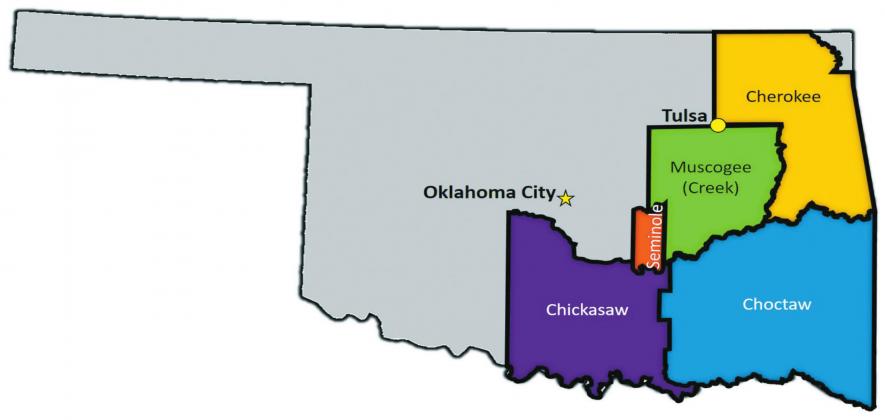A landmark Supreme Court in early July stating that a majority of eastern Oklahoma falls within the boundary limits of an Indian reservation. Now, this decision may seem cut and dry; it is referring to the land, right?
Unfortunately, no. There are other issues at hand ever since the Supreme Court ruling. The ruling also restricts law officials. The state cannot prosecute Native Americans who have a tribal identification card. This also prohibits law officials to prosecute Native Americans who have been charged for a crime and are currently awaiting trial.
Kelsey Lipp, an inmate in a Tulsa jail who is awaiting court to answer to charges of robbery and murder. Her Tulsa County public defender Jack Gordon brought Lipp’s identification card to the court in hopes of having her charges dropped.
“It’s a no-brainer,” Gordon told the press.
Prosecutors are now giving police officers laminated index cards with instructions on how to proceed in an arrest, depending on whether the suspect or victim is considered “Indian” or “non-Indian.”
This ruling could also set free violent inmates who have already been tried and found guilty of the crimes. Take Shaun Bosse, for example, he is on death row for murdering a Chickasaw mother and her two children in 2011. Even though he is considered a “non-Indian,” he is trying to challenge that the crime happened on the undiminished boundaries of the Chickasaw Reservation.
Oklahoma Attorney General Mike Hunter issued a press release in response to the thousands of requests coming in from inmates and family members alike pressuring law officials to release the inmate.
“My team and I plan to challenge every single appeal that attempts to overturn longstanding convictions on historic tribal land,” Hunter said. “We are not questioning the Supreme Court’s ruling in McGirt, but instead seeking to promote public safety by saying these convicted criminals waited too long to bring their claims. Also, we are asking the court to make clear that the state still has jurisdiction to punish non-Indians who victimize tribal citizens, which would provide the maximum possible protection to tribal members. In the meantime, we are asking the Court of Criminal Appeals to provide guidance on these cases and deny any requests by inmates attempting to get released from prison.”
Hunter also touches on cases like Bosse; wondering if the state has jurisdiction, along with the federal government, over non-Indians who victimized tribal citizens.
“We take the position that the state has a right and duty to protect our Indian citizens from those who murder them like Bosse,” Hunter said. “There can be no good that comes from tying the state’s hands when we are trying to protect Native Americans by exercising jurisdiction over non-Indians. This is no way undermines tribal sovereignty, but instead is a way for the state to work with the federal government in making sure tribal members receive police protection and justice when they are victimized.”
Hunter is also asking the court to “clarify how Indian status is to be proven, and to put the burden of proving Indian status on the defendant and that the location of the crime fell within the boundaries of a legal reservation.”
Even though this is an unprecedented event, one has to wonder what will come of the Supreme Court ruling. Will it allow criminals like Lipp – even though Lipp has not been found guilty of robbery and murder, she still has a violent criminal past with convictions of Robbery with a Firearm and Use of a Vehicle in Discharge of a Weapon – and Bosse to live their lives outside of the prison walls?

